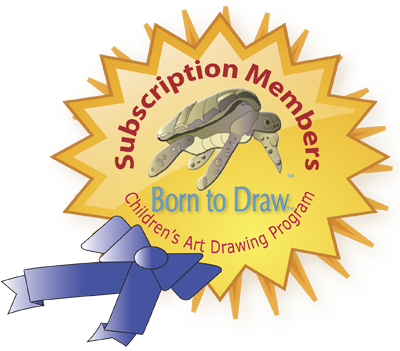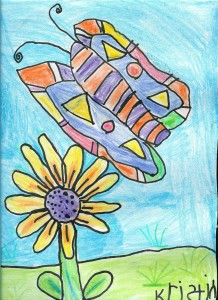Transition in Art Education: Part 2 by Ronald Neperud
ART EDUCATION ISSUES
Art education as inquiry and as practice draws upon many fields and disciplines, some dealing directly with art, such as the creation, criticism, history, and aesthetics of visual arts. Other inquiries, sometimes tangential to direct applicability, also are important to our conceptions and practice of art education. The feminist movement, conceptions of aesthetics, multiculturalism, and other social issues, such as class, although often treated separately, usually overlap in the shaping of contemporary art education. Feminist inquiry in art education serves as an example of how art education scholars’ inquiries and interpretations have been influenced by several issues raised by postmodernist thought.
Feminism has been a major area of inquiry in the postmodern era, drawing upon deconstructionist, semiotic, poststructuralist, and other critical theories. Most intellectual disciplines have been affected by these theorists; art education inquiries are no exception. Recent feminist interpretations employed by art education scholars are reviewed and examined for their implications for theory and practice. Sandell (1991) finds feminist pedagogy to address the needs for social change and the development of strategies for empowerment and building community. Hagaman (1990), surveying femi-nist inquiry in art history, art criticism, and aesthetics, finds a clear relationship of concerns and criticism across these three disciplines. In each area, feminist scholars have attempted to claim a place for the work of women and to uncover hidden (or not-so-hidden) biases inherent in the roles and representation of women within the discipline in question. Additionally, feminist scholars have taken a deconstructive stance, challenging the very frameworks and processes of these disciplines as traditionally understood. (p. 33)
She urges that artists, art history, and critical criteria be studied *in ongoing, examined, and specific contexts.
Garber (1990) also has examined the implications of feminist art criticism for art education:
“Drawing on critical methods such as poststructuralism, Marxism, and psychoanalysis, feminist critics in the arts and humanities are at the forefront of practices that work to strategically undermine the status quo” (p. 17). The bases underlying practices are “social analysis, political activism, and self-knowledge” (p. 19), which examine the effects of social systems and institutions on how women are viewed, the political nature of activism, and the validity of subjective experience as related to one’s self- worth.
This subjectivity is echoed in Korzenik’s (1990) contention that the acceptance and use of women’s strengths “will direct our attention, our curiosity, our caring, to different features of our history. Permitting our recognizable lives, our feelings to enter our work is a decision of a higher order of magnitude” (p. 54).
Similarly, Garber (1990) concludes that feminist art criticism as fluid and ongoing, set against a consciousness of one’s relationship to the world, can become a student’s active response to and intervention into the world” (p. 24).
The language that one chooses in speech or in writing soon provides an indication of sexist bias or lack of equitable treatment of a topic. Obvious gender stereotypes, omissions, and distortions are revealed through one’s language. At times, seemingly sympathetic intentions are belied by contradictory, sexist language of dominating masculine terms. An editor’s role in assuring gender-balanced representation in text materials suggests that one should “incorporate non-biased gender-sensitive terms: select … art images that incorporate a substantial amount of artwork by women; design components that enhance the worth of every artist” (Turner, 1990, p.62). These are considerations that not only could, but should, be incorporated into every classroom practice.
CONTENT IN ART EDUCATION
Art education content, particularly the staple of fine art of the Western world emphasizing formalistic values and the visual structures of stylistic differences, has been critically analyzed and found wanting in recognizing gender, social, and ethnic issues. The deconstructive feminist analysis of art history and aesthetics has been especially critical of art content as usual. As the title of this book implies, content becomes transformed through art education transitions. The content of art education often has shifted from emphasis on process to product orientations, often in response to changes beyond its boundaries. Today, art education content that is not responsive to social context runs the risk of becoming disconnected from life-sustaining nourishment.
Histories of art education reveal how markedly its purposes and content have changed in relatively short time spans (see Efland, 1990; Logan, 1955; Wygant, 1983, 1993). Also, a survey of art education textbooks of the past thirty years reveals how instructional content designed for elementary and secondary art teachers has changed not only in focus, but also in the very language used to explain concepts. The preparation for art education has change as attention to disciplines such as sociology and anthropology has provided new insights (McFee, 1961). Postmodern critiques reveal just how dramatically the content of art education has changed.
1. The content of art studies is less likely to be accepted as directly given by experts (artists, critics, aestheticians, art historians, textbook writers, curriculum specialists, and other authoritative sources).
2. Knowledge is more apt to be socially constructed by teachers and students; knowledge is not accepted as given, but is interpreted according to student and teacher needs.
3. Content is historically and culturally situated and does not exist as a universal truth with no connection to life of particular times and places.
4. There is a willingness to accept subjective, personally oriented experiences with art as a legitimate source of information.
5. The singular focus on museum and gallery fine art has been supplemented by culturally diverse creations of “outsiders,” folk artists, people with disabilities, the institutionalized, people who make things at home, yard art, and others.
6. The concept of a linear foundational art instruction has been questioned: in particular, traditional basic design and drawing disciplines are no longer regarded as the sole prerequisites for creative development.
7. Studio-dominated art activities have been supplemented by aesthetic, art history, critical, and multicultural studies.
8. A focus on the meaning of art has supplemented, if not replaced, structural, formalist studies.
9. Teachers are increasingly regarded as legitimate interpreters, as well as creators and translators, of art instructional content; they are no longer the medium through which information created by others passes.
The meaning of these content changes is that teacher education, including continuing education, must be constantly updated if art studies are to remain vitally connected to students’ daily life. A constant reminder is that content is intimately linked to context; information divorced from its functional context such as the elements and principles of design, is academic rather than functional knowledge. Furthermore, design applicability derives its meaning from historical context or subjective interpretation.
Content cannot be conceived of as just a bit of new information that can be added to the old. Rather, existing concepts as the basis for perception become transformed through experience. Additionally, through analysis and reflection, existing information is related to other ideas through associational processes. What I am suggesting is that there is dynamic tension between old and new concepts.
Through the processes of perception, analysis, and reflection, we give greater prominence to certain content as opposed to other content. For example, if color theory were taught as an academic universal, content would soon be outmoded relative to new color relationships that artists, such as Rothko, create in their work. At the same time, we do not abandon existing content, serving as it does as a transition to the new.
Content, whether referring to concepts, processes, or bits of relatively discrete information, is always changing, being absorbed, and transformed into new experiences. Discussions of content in contextual settings comprise transitions in art education providing access to new experiences. In this manner, content is a vital, although changing, dimension in art education transitions. New emphases are constantly developing as attention turns to recognizing emerging social issues: multiculturalism, gay and lesbian recognition, the poor and voiceless, and the exceptional and disadvantaged.
CONTEXT IN ART EDUCATION
Context is an integral part of transitions. Any information that is acquired
exists in some context; the meaning of a proposition or schema is dependent on relationships and associations with other schemata, in effect, as part of an associational network. Brenda Marshall in the introduction to Teaching the Postmodern (1992) presents a view of network that pictures the association of elements or nodes. She begins with a random listing of processes, authors, disciplines, and movements that
shuffle uncomfortably in a shared space … Each is a node within a multi-dimensional network, one of uncountable nodes. From each node project threads which tangle with the threads of other nodes…. Sense made here is limited, local, provisional, and always critical. Self-critical. That is sense within the post-modern moment. This is the postmodern. (p. 2)
Marshall’s network is an apt view of context in the postmodern sense. The network of propositions, varied though they may be, constitute context. Context consists of those associated propositions or schemata that one is willing to accept as pertinent to a concept under consideration. A question that is frequently raised is, What context is pertinent to understanding a particular art object? From a sociological perspective, Wolff (1981) sheds some light on the question by recognizing political, social, and other ideas that influence the creation of art. It is not a simple direct relationship “whereby political, social and other ideas are simply transposed into an aesthetic medium. The actual material conditions of artistic production, technological and institutional, mediate this expression and determine its particular form in the cultural product” (p. 63). It is necessary to understand the aesthetic codes and conventions accepted at the time of the work’s creation.
Wolff (1983) also discusses the specificity of art in the realm of aesthetics, concluding that “art has its own specificity, first, in the relatively autonomous structures, institutions and signifying practices which constitute it, and through which it represents reality and ideology” (pp. 107-108). She warns that one cannot ignore political and social features of aesthetic judgments.
One begins to realize that the discussion of art certainly must recognize the contextual complex surrounding the creation and perception of art, serving to illustrate how context impinges on the meaning of any object or event, just as one cannot ignore political and social features in the discussion of art and aesthetics, so too one cannot ignore them in art education discourse.
Hart (1993) has framed the contextual issue as the formalist/contextualist debate in multicultural aesthetics. On the one hand, there are those who believe that art is art, whether created by Western artists or by indigenous peoples –that art is understood and valued for its formal structure. On the other hand, the argument is that without understanding the context within which the art of “others” is created, used, and valued, we impose a Western interpretation that does injustice to the art of others. Without contextual information, we have no basis for understanding the work of various cultures, including that of people who make things in our society.
A somewhat broader view of the cultural context of cognitive activity is seen by Rogoff (1990) as consisting of those societal structures that contribute to human activities—economic, political, medical, religious, and educational systems. Cultural institutions, technologies, and traditions built by previous generations “are influential in setting the problems that need solving, providing technologies and tools for their solution, and channeling problemsolving efforts in ways that are valued by local standards” (p. 43). This means that the institutions of culture at particular times provide the context for the meaning of concepts and objects.
Recently, Kristin Congdon (1994), art educator and chair of the National Art Education Association Research task force on questions of context, lists seven subject areas for study within the broader context category. These include: history, values, culture, environment/ecology, settings, partnerships/collaborations, and policy. Within each area, several research questions are included. For example, within culture she asks, “How does (and should) culture (race, ethnicity, age, occupational identification, economic status, disability, sexual orientation, religion, etc.) influence theory and practice of art education and our notions of what art is, or is not? How should research about varying cultures be approached, given the lack of art educators of color and the growing prevalence of students of color?” (p. 2). This, along with previous literature, points to the increasing importance of context in studying content, as well as serving to illustrate the complexity and interconnectedness of context, depending upon how one cross-sections each area.
From a postmodern perspective, context is that tangled web of relationships among the contents of life that are ever changing and shifting. It would seem that interpretations by individuals at various times and with different purposes always would be important in creating that shifting web of context.
This means that in the teaching about art there can be no one context that a teacher weaves for student understanding of art. Different teachers, and students, each with their own background of experiences, will have a somewhat different perspective of what context means and thus what art means depending on the role of interpretations. This also means that art history and aesthetics cannot be distilled into an essence that can be taught in a linear authoritative fashion, rather, the role of context interacting with content must be considered.
Furthermore, these views raise important questions about the feasibility of current efforts to establish “standards” in art education; the shifting webs of content and context are antithetical to all but the most general of standards.








Leave a Reply
Want to join the discussion?Feel free to contribute!